Stuffing murder victims in barrels a common practice since mid-19th century
The body found in a barrel at Lake Mead near Las Vegas is latest in a long tradition
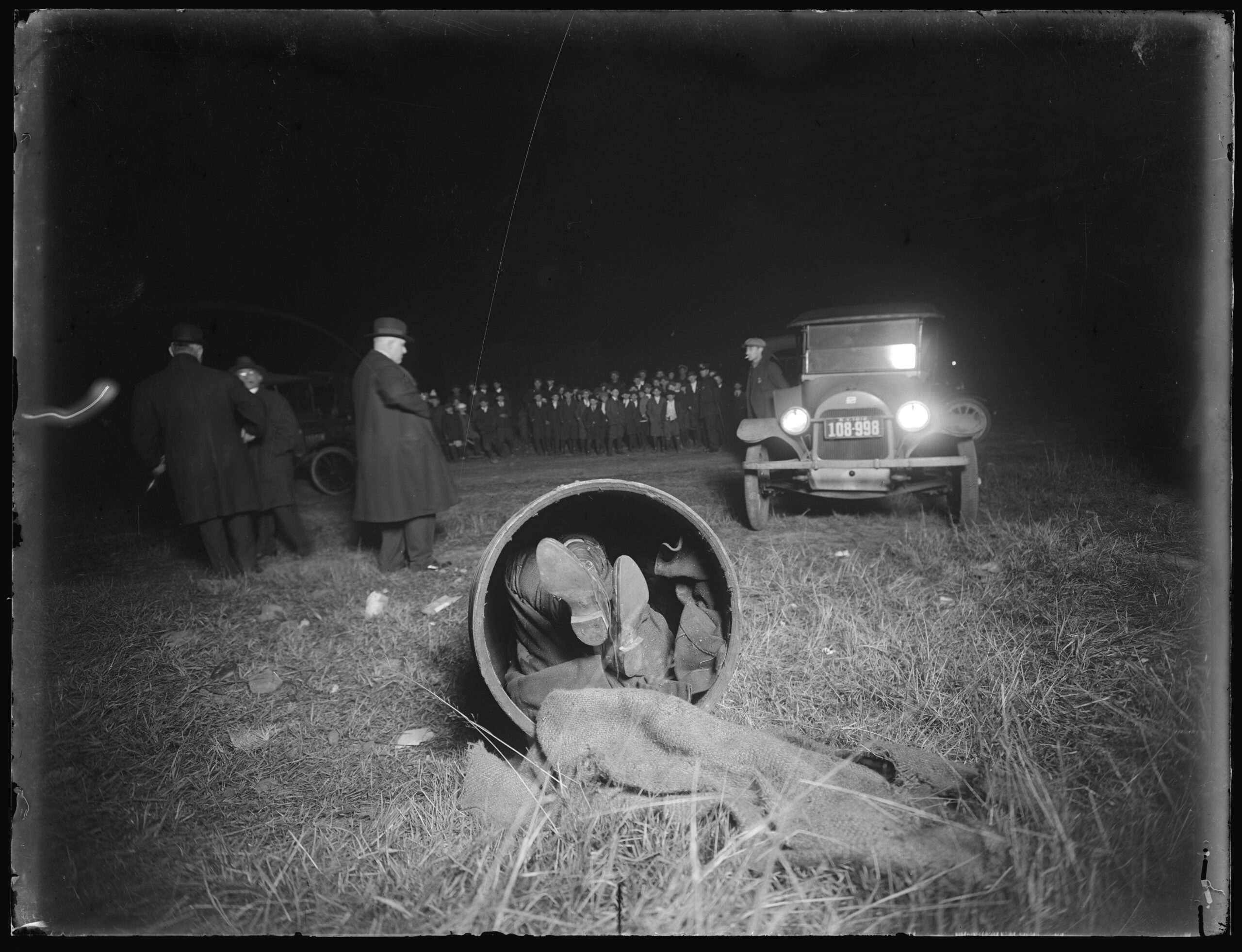
In April 1858, workers at the Hudson Valley Railroad’s freight house smelled an awful stench coming from a wooden barrel addressed to “Dr. Jennings, New York City.” They opened it to find a woman’s disemboweled body. Detectives tracked the barrel to Chicago, where a teamster remembered receiving it from a man named Henry Jumpertz two months earlier.
The discovery and investigation into the death of Holland immigrant Sophie Werner made international news as the original “barrel murder” case. Defendant Jumpertz insisted Sophie, his mistress, hanged herself. Fearing he would be blamed for it, he cut off her limbs, used surgical tools to remove most of her organs, stuffed her remains into a pork barrel, covered them in salt and shipped the container to New York. He was convicted, faced a death sentence, then won acquittal on appeal.
Twenty years later, in 1878, another “barrel murder” defendant, Edward Reinhardt, at trial offered the same explanation — suicide — for the cause of his wife’s death. The year before, a passerby had spotted an abandoned barrel containing the woman’s dead body, with its legs sawed off, near a road in the Silver Lake section of Staten Island, New York.
In 1890, New York Police arrested Alexander Phillipsen, lately arrived via passenger ship from Denmark, after a man’s slashed dead body was found in a barrel filled with dried cement at the U.S. customs house. The sensational story made headlines all over New York. But police in Copenhagen realized the real culprit was Adolph Phillipsen, also of Denmark, who sent the barrel to New York after murdering a man there in 1889.
In November 1901, Chicago Police extracted the hacked corpse of Italian national Antonio Napalia from a flour barrel dumped into a vacant lot off Western Avenue. The next year, a trial court convicted two recent Italian immigrants, whose motive was robbery, in the slaying.
Using barrels to dispose of murder victims is not necessarily exclusive to killers tied to organized crime. All over the globe, into modern times, everyday killers have employed barrels — from those with curved wooden staves secured by metal hoops to the 45- to 55- gallon steel or plastic varieties — as a convenient way to conceal a body for transport to a hiding place.
Still, the discovery on May 1 of a set of human remains inside a severely corroded steel barrel, emerging after decades from the deep mud at the drought-ravaged Lake Mead National Recreation Area, 30 miles from Las Vegas, has many speculating about whether the grisly find is a long-buried reminder of the city’s Mob past.
Las Vegas police have concluded that the Lake Mead barrel murder victim, unearthed on the shore at Hemenway Harbor, died from a gunshot wound. The badly decomposed corpse still had a shirt, belt and shoes clinging to it. Detectives surmise the Kmart-brand clothing was purchased in the mid- to late 1970s, and so the death may have occurred in the late ’70s or early 1980s.
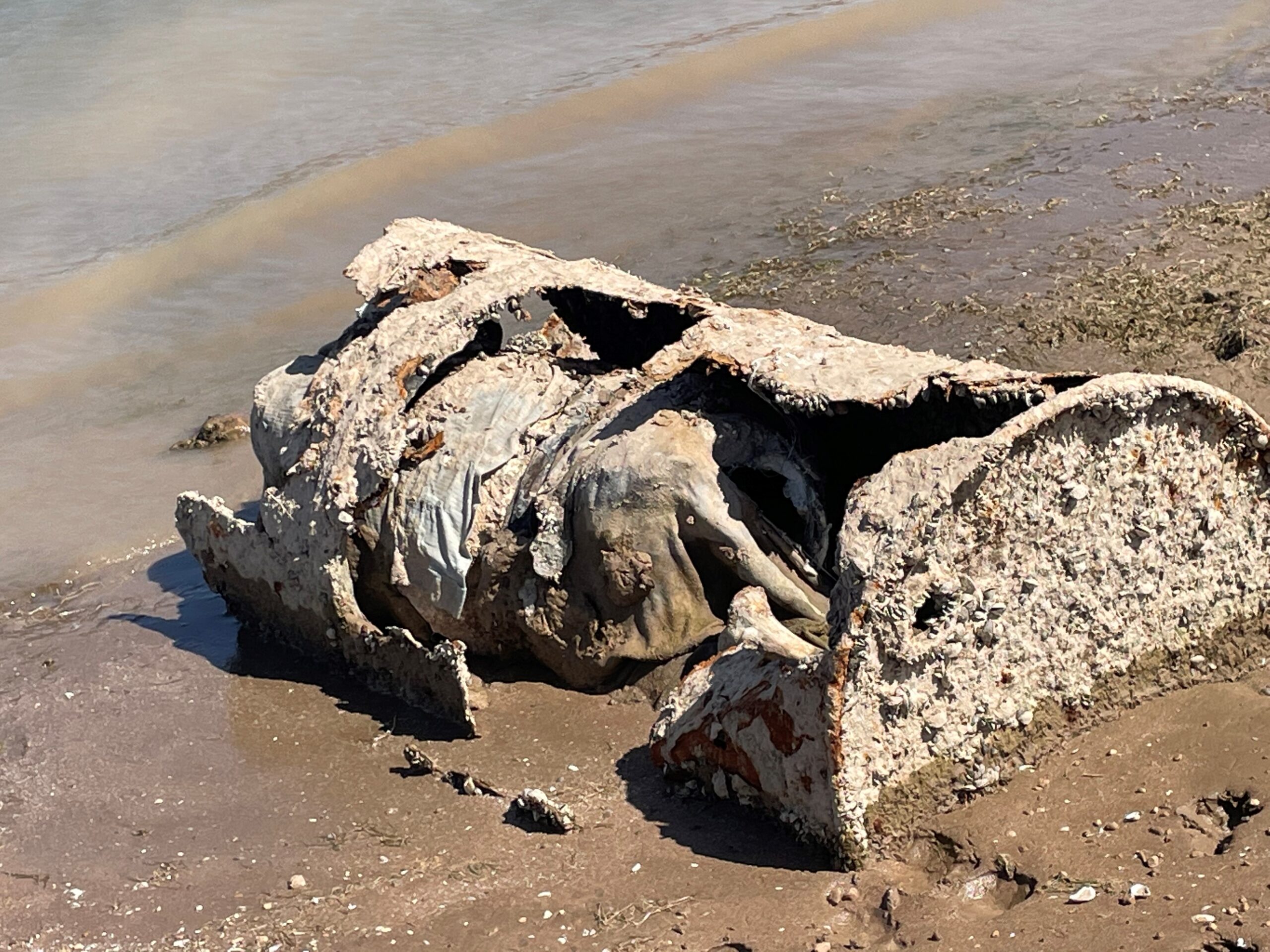
Whoever transported the barrel containing this murder victim probably boated several hundred yards from shore and dumped it into water deep enough, or so they thought, to prevent its discovery indefinitely.
The barrel sat in the same spot for decades and only emerged when the lake receded to the current record-low water level of 1,049 feet, the lowest since the lake started filling in late 1934, amid declining snow melt from the western Rocky Mountains that drains into the Colorado River, and an exceptionally intense 22-year-long drought in the Southwest.
Lake Mead’s water supply has dropped 22 feet in the past year, and the U.S. Bureau of Reclamation projects it will drop another 26 feet by fall 2023 to about 1,023 feet. The decline in water has exposed long-submerged boats, anchors, fishing equipment and, recently, two sets of human bones.
Meanwhile, additional mortal remains are likely to appear from the reduced depths, but not necessarily murder victims. As of 1994, the lake had claimed 59 people who drowned without their bodies being recovered.
Of course, the person or persons who used a barrel in the Lake Mead barrel murder case obviously did not want the body to be found. But why did they decide to go to the trouble of encasing the victim in it, transport the heavy object by a truck or other vehicle to a water craft — risking exposure even at night — and unload it into the lake, instead of simply burying the body in the desert? For one, whoever ordered it wanted the victim to receive special treatment, perhaps over what the dead person had done to “deserve it” — such as gambling away a lot of money owed to a loanshark — or to satisfy the personal, vindictive feelings of the murderer.
Or was it the preferred “style” of corpse disposal of a Mob chief, seeking revenge against someone who crossed him in some way and willing to take it that far to achieve satisfaction? If the Lake Mead barrel murder indeed was from the late 1970s or early 1980s, it would coincide with the 1976 killing of infamous Mob figure Johnny Rosselli, whose body was discovered by fishermen inside a barrel in a bay outside Miami.
It also would be the same era when former Teamsters Union president James Hoffa disappeared, in 1975. Hoffa has long been rumored to have been killed by hitmen from a conspiracy involving Detroit mobsters Joe Zerilli, Jack Tocco and Tony Giacalone. Under one scenario, advanced by journalist Dan Moldea, his body was placed into a barrel in Michigan and transported to a waste dump in New Jersey, on the instructions of the Genovese family’s New Jersey crime boss Anthony “Tony Pro” Provenzano. The theory goes that the late Provenzano, once closely associated with Hoffa in the Teamsters Union before they had a falling out, ordered the more than 600-mile transfer of the barrel to possess Hoffa’s remains as a spiteful “trophy.” Currently, the FBI is reportedly deciding when to start digging at the New Jersey landfill to see if the alleged Hoffa death barrel is there.
Whose body was in the Lake Mead barrel?

Based on the police department’s estimate of the period when the murder may have occurred, we speculate that the corpse could be one of three missing persons, each having at least some association with Argent Corporation. That company owned the Stardust, Hacienda, Marina and Fremont casinos where Mob confederates secretly skimmed away cash into the pockets of crime families in Chicago, Kansas City, Milwaukee and Cleveland during the 1970s.
George “Jay” Vandermark skimmed between $7 million and $15 million from slot machines at the Argent casinos before vanishing in 1976 while on the run from the Chicago Outfit and Nevada gaming regulators. Court testimony in 2007 indicated that Vandermark was killed in Phoenix and buried in the desert, but a body has yet to be found.
William Crespo was a cocaine trafficker who flipped to be a witness for the U.S. government. He disappeared in 1983 before testifying against a former Argent executive and six others, who were all acquitted as a result.
Johnny Pappas, a casino employee with Mob ties and former manager of a resort at Lake Mead owned by Argent, went missing in 1976 after he told his wife he was going to meet an unknown person interested in buying the boat Pappas had docked at the lake. Of the three, Pappas seems to us to be the most likely to be the murder victim in the barrel.
Assuming it is possible the police could expand the period during which the murder occurred, we widened our research to include the late 1980s. As a result, we can add two more men reported missing in the late 1980s who also could be the barrel victim:
- Frank Rossana, 67, vanished on April 20, 1989, two months after his Las Vegas-based brokerage firm, Power Securities Corporation, collapsed, defrauding thousands of people who had invested millions. He also had just spent $500,000, raised somewhere, on penny stocks. His estranged nephew Joe once associated with alleged gangster Philip “Fat Phil” Dioguardi, a bodyguard to Colombo crime family boss Joe Colombo in New York when Colombo was shot in 1971. Police discovered Rossana’s 1988 Cadillac parked at McCarran International Airport, but found no evidence of him taking a flight.
- William Jay Shaw, 63, a cash-rich Las Vegas gambler whose relatives reported him missing since January 31, 1989. He was set to take a trip to New York to see family members. Shaw placed wagers in Las Vegas casinos with money provided by members of “the Kosher Boys,” a high-rolling sports betting group in New York and New Jersey who also laid bets with illegal bookmakers. Shaw would send the gamblers their winnings by express mail.
The 1903 ‘Barrel Murder’ in New York
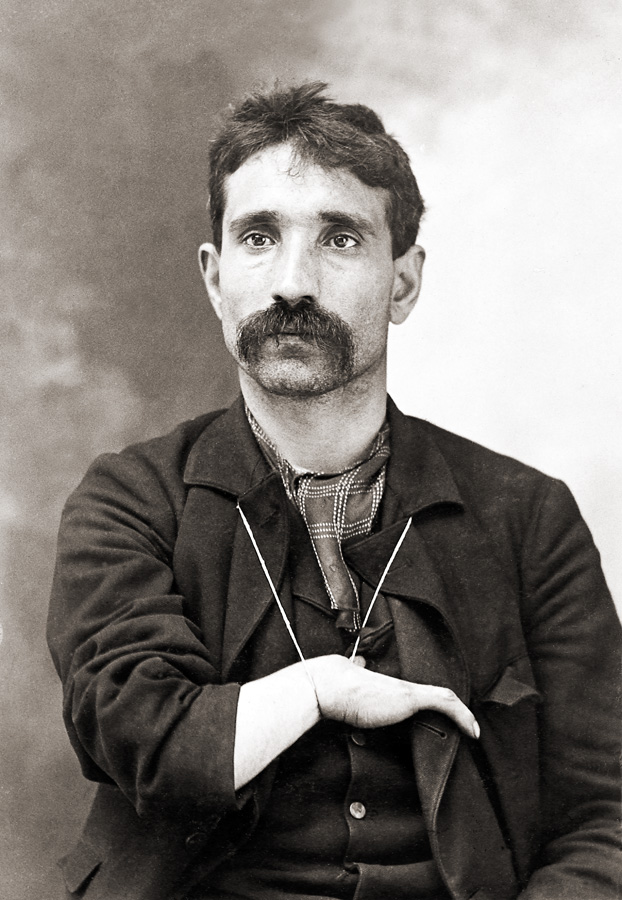
Going back more than a century to the early Sicilian Mafia gangs in New York, the most notorious murder case linked to gangsters was referred to in newspapers and crime books as “the Barrel Murder.” On or about April 11, 1903 (reports vary), a woman walking along East 11th Street in Lower Manhattan’s East Side came upon a standing wooden sugar barrel, its top covered by an expensive overcoat, next to the curb. When she picked up the coat, she screamed upon seeing a man’s blood-covered face inside.
The victim, stabbed and mutilated, his head nearly severed, then crammed into the small space with his clothes on, was Benedetto Madonia, an Italian immigrant. New York detectives would learn that Madonia had been killed by the Morello gang, an American affiliate of the Mafia. Led by Giuseppe “Clutch Hand” Morello, the gang engaged in murder, extortion, kidnapping and counterfeiting in a territory from East Harlem and Manhattan to the Bronx. The condition of Madonia’s body reflected the gang’s willingness to commit atrocities. The killers slashed off his genitals and shoved them into his mouth.
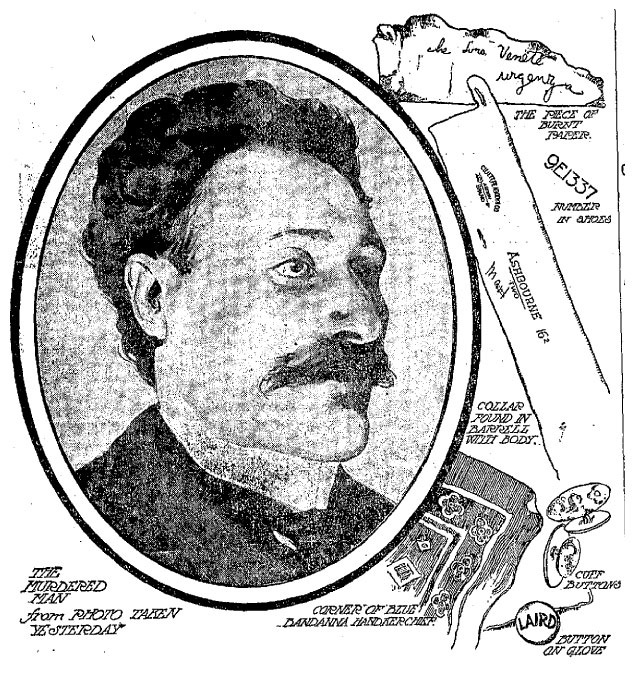
Did the Morellos assume garbage collectors would take the barrel away, or did they want him to be found? The most accepted story goes that Madonia, himself a counterfeiter, had sent money to “Clutch Hand” Morello to pay for the criminal defense of Madonia’s imprisoned brother-in-law, a member of the Morello gang. But Morello stole the cash instead. Madonia traveled from Buffalo to confront Morello, who had him killed, and then some.
That year in New York, not long after the turn of the century, was particularly violent. A few months later, in the summer, a shooting war between the Monk Eastman and Five Points gangs erupted, with police struggling to stop it. The battling ended with three dead gangsters and seven wounded. The publicity from the shocking Madonia case may have represented a ruthless statement of the times, a high water mark of infamy among competing gangs.
“A barrel murder was the modus operandi of the Mafia, and the condition of [Madonia’s] body suggested the motive,” wrote James Lardner in his 2001 book, NYPD: A City and its Police. “Their victims were usually weighted down and dropped in the river or put in a barrel and shipped to another city. If it was an informer, though, he would likely be mutilated and left in a conspicuous place as a warning to others.”
Barrel murders through the decades
Since the Morello barrel murder and the lesser known ones before it, many other killers have opted to get rid of their victims using the method. However, based on scores of news stories over the past 150-plus years, while some reported cases are Mob-related, many appear not to be. One thing a significant number of barrel slayings has in common: angry violations of the body, which might be another reason for the murderers to choose the cover of a barrel. The following is as exhaustive a list as we can provide of such slayings.
- 1906 — Ebervale, Pennsylvania. A hunter and his dog happened upon a partially burned sugar barrel with the body of an 18-year-old woman, throat cut ear to ear, charred beyond recognition, her head twisted to fit inside it, in eastern Pennsylvania. Hundreds of local people viewed the burnt corpse at the morgue, but no one could identify her.
- 1911 – Rochester, New York. A farmer inspecting his skunk trap in a gulley off a main road stumbled onto a wooden barrel with the dismembered and decapitated body of Francesco Manzella, an immigrant from Italy The victim’s head and legs were sliced off with the precision of a trained surgeon. Manzella had been released a few months earlier after serving more than two years in a New York state prison for his part in a “Black Hand” Mafia extortion conspiracy. One witness reported seeing a horse-drawn wagon carrying a tall object and then driving by with the wagon empty. Others questioned reported that Manzella intended to move back to Italy and so his murderer may have robbed him of his travel money.
- 1917 — Watervliet, New York. Near Albany, firefighters who put out a blaze came across a sugar barrel containing the folded corpse of a young man, Frank Frogola, covered in oil and sawdust. A grand jury indicted three men for arson, but no convictions resulted, and the murder remained unsolved.
- 1918 — Brooklyn, New York. Three boys playing with a large wine cask in a vacant lot at 45th Street and Eighth Avenue discovered it held the disfigured body of Gasparino Candello, stabbed 39 times. Prosecutors charged three men in the murder, presenting the barrel in court as evidence. A defendant convicted and sentenced to die in the electric chair for a separate murder testified against his two accomplices, saying they killed Candello when he refused to pay up front for 45 cases of Italian tomato paste.
- 1920 — Rochester, New York. Two people who witnessed a fire found a scorched sugar barrel containing the mutilated and singed body of Filippo Ferrara. Police later arrested Christopher Mammano, who confessed to killing the man with an ax to escape making a mortgage payment.
- 1927 — Bellaire, Ohio. A man found pressed inside a whiskey barrel had been strangled to death with a clothesline, and large nails pounded into his skull. Police could not identify him.
- 1930 — Pittsburgh, Pennsylvania. The headless body of William Gregory, said to have doubled-crossed the city’s liquor syndicate during Prohibition after selling a truck and its load of bootleg beer, was placed into a cabbage barrel. It was the city’s 78th gangster killing since 1926. Police arrested syndicate member Philip De Fazia.
- 1933 — Cincinnati, Ohio. An unknown suspect killed New York jeweler Alvin Brunner, stuffed him into a barrel in Columbus, Ohio, then left it inside the rented garage of a suburban home in Cincinnati. The murderer also robbed Brunner of about $20,000 in jewelry.
- 1937 — Queens, New York. Esther Gordon, widow of reputed underworld drug dealer Maxie “One-Eyed Maxie” Gordon, was stabbed to death with an ice pick and stuck into a flimsy barrel. Police thought underworld assassins killed her fearing she might squeal about the drug ring they shared with her husband before he died in a car crash in Texas. Maxie Gordon got his nickname from losing an eye in a fight with the Egan’s Rats gang in St. Louis in 1920.
- 1940 — East Liverpool, Ohio. A broken potato barrel contained the body of Julia Wall, wrapped in a burlap sack. She had been strangled only about six hours before being found. The perpetrator tried to roll the barrel down a deep ravine but heavy brush stopped it.
- 1946 — Joliet, Illinois. Arthur Blaurock was killed and crammed into a pork barrel at a slaughterhouse. A co-worker, Frank Borden, confessed in 1948 to the murder and to stealing the victim’s $200 diamond ring.
- 1947 — Philadelphia. Police officers could not identify the nude body of a young woman strangled to death with a length of gauze, then stuck into a heavy metal drum and rolled down an embankment.
- 1947 — Philadelphia. Margaret Dougherty, strangled to death, was found in a 50-gallon oil drum stuffed with sawdust and newspapers.
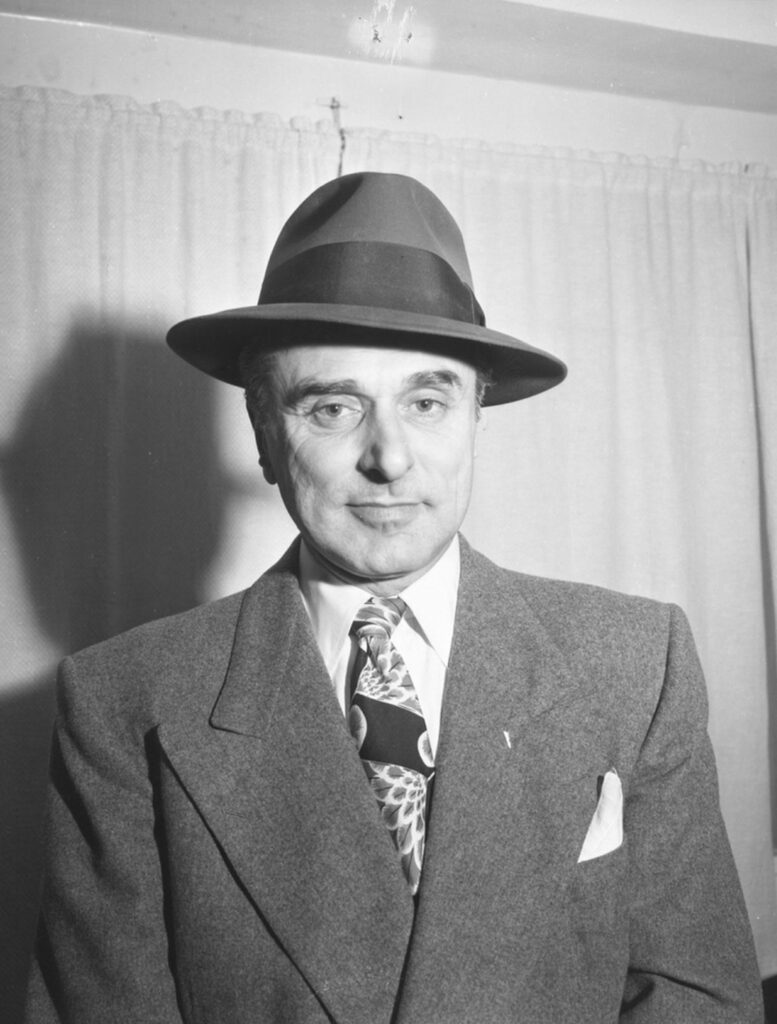
- 1976 — Miami. The corpse of Johnny Rosselli, infamous Mob figure and one-time Las Vegas representative of the Chicago Outfit, was located inside a 55-gallon metal barrel wrapped with metal chains in a failed attempt to keep it submerged in Dumfoundling Bay. Unnamed Mob informants told the New York Times in 1977 that Cosa Nostra crime bosses decided Rosselli had to go because of testimony he provided — without permission from Mob leaders — to a grand jury about Mob infiltration at the Frontier Hotel in Las Vegas and to a U.S. Senate committee investigating the assassination of President John F. Kennedy and plots by the CIA to kill Cuban leader Fidel Castro. On July 28, 1976, a friend of his and a second man from Chicago lured Rosselli onto a boat for a cruise. As Rosselli drank some vodka, the Chicago guy put his hand over Rosselli’s mouth. Rosselli, who had emphysema, was quickly asphyxiated. They taped a washcloth over his mouth to make sure. They sawed off his legs so he would fit into the 36-inch-high barrel. They used a rope and hooks to lift his torso into the container, threw in his severed legs and threaded the chains around his remains, through holes in the barrel and the barrel lid, then threw it overboard. But eventually it wasn’t heavy enough to stay sunk — with uplift from decomposition gases being a factor — and some fishermen noticed the barrel on a sandbar beside a 28-foot-deep canal. The fishermen told police they figured the barrel contained a body.
- 1987 — Bowie, Texas. Donald Franklin Johnson of Lubbock was shotgunned to death, his body wrapped in cloth, then encased in cement within a padlocked 55-gallon barrel and thrown into Amon G. Carter Lake. A fisherman spotted the barrel five months later. A man was found guilty in the capital murder in 1989.
- 1988 — Hancock County, Indiana. Two barrels filled with concrete contained the body parts of Steve Rexcoat of Indianapolis. Prosecutors charged confessed murderer Steve “Weed” Weaver with the slaying.
- 1992-1999 — Snowtown, South Australia. In the heinous Snowtown “bodies in the barrels” case, police recovered the cut-up human remains of eight people from six plastic barrels stored in a former bank vault. The rural serial killers murdered a total of 12 people, male and female, some of whom were tortured, starting in 1992. The lead perpetrator, John Bunting, and three other men were convicted and sentenced to from 25 years to multiple life terms in prison for the homicides.
- 2000 — Kansas and Missouri. John E. Robinson Sr., who surfed online for sex partners, was charged with murdering five women whose bodies were found inside barrels, three placed in Kansas and two in Missouri.

Feedback or questions? Email blog@themobmuseum.org





